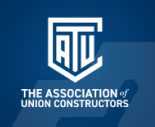NMAPC History
NMAPC: A Brief History
Although the first National Maintenance Agreement was signed in 1971, the history of the NMA actually begins in 1969 with the creation of the National Erectors Association (NEA).
Headquartered in Washington, D.C., the NEA was made up of companies in the structural steel segment — mainly steel erectors and fabricators. Many of these companies also had a strong presence in the industrial maintenance field, using Iron Workers to perform repairs, refurbishments and upkeep on the large, sophisticated equipment found in steel mills, refineries, utilities and manufacturing plants. Shortly after the NEA was formed, members began discussing the possibility of working with the Iron Workers to create a new project labor agreement (PLA) specifically for pursuing industrial maintenance work. This PLA would help union contractors compete more effectively with Steelworkers for work in the steel sector.
The idea was simple: the new maintenance PLA would offer a predictable, streamlined process with pre-set rules for everything from overtime pay to holiday leave and work stoppages — and more importantly, it would eliminate the need for long, acrimonious negotiating sessions with the local union every time a new maintenance job came up. If done right, a new PLA might be enough to keep contractors competitive and give steel producers an incentive to keep using Iron Worker contractors. Furthermore, a new maintenance PLA might open doors for NEA contractors in other industries as well.
After several months of hard work and negotiations between the NEA and the Iron Workers, the first National Maintenance Agreement (NMA) was signed on May 25, 1971 between the NEA and the Iron Workers.
A New Approach to Maintenance
The NMA differed from other maintenance agreements in several significant ways. First and foremost, it was controlled jointly by management and labor, whereas other PLAs were unilaterally controlled by unions. This innovative labor-management partnership was soon formalized with the creation of the National Maintenance Agreements Policy Committee (NMAPC), an impartial body set up to administer the NMA, resolve conflicts and settle questions related to its use. Joseph La Rocca, the executive director of the NEA, became the first impartial secretary of the NMAPC as well, and continued in both positions until his retirement in 1986.
In essence, the NMAPC offers "one-stop shopping" for contractors and unions. When you become signatory to the NMA, you not only get to operate under its streamlined terms, but you're also granted full and immediate access to the Committee's extensive in-house support structure. Not sure how to interpret a certain provision of the Agreement? Call up one of our labor relation specialists. Jurisdictional disputes are handled by a work dispute umpire, arbitrators are called in to handle the rare work disruptions that occur in clear contravention of the Agreement, and a special grievance review subcommittee is in place to settle all other disputes — all at little or no cost to signatories.
Safety was also an important part of the NMA. Pre-job conferences between the contractor and unions are mandatory so that prior to setting foot on the jobsite, everyone from the president of the company to the guy digging the ditch knows that the well-being of the workforce is the number one priority.
The NMAPC has evolved over time. Today, its primary decision-making arm, the Labor-Management Committee, consists of 28 members made up of an equal number of representatives from labor and management. The labor side includes one member from each of the 14 participating international unions. The membership on the management side reflects the diversity of union construction, with representatives from large multi-national corporations as well as private specialty construction firms. Two representatives — one each from labor and management — preside as co-chairs, with the labor co-chair also serving as president of the NMAPC.
The creators of the NMA also followed through on their pledge to make the new Agreement less cumbersome and restrictive for owners. Gone were the long-term contractual requirements that other agreements mandated. The NMA was designed to be a portable, open-ended tool for using skilled union labor on crucial maintenance and industrial construction projects. Flexibility was also important; each participating union was allowed to modify certain parts of the NMA to better fit their industry, though they are still 99% similar in content; the fourteen separate Agreements are referred to collectively as the NMA.
An Age of Expansion
Although the NMA was born out of a mutual concern between Iron Workers and their contractors, it was by no means an exclusive club; the Agreement could be adopted by any building trades union and any contractor who utilized union labor. After all, Iron Workers weren't the only ones performing industrial maintenance and repair. In November 1971, just a few months after the Iron Workers signed on, the Boilermakers came on board too. The following year saw five more trades adopt the NMA: the Carpenters, Operating Engineers, Laborers, Painters and the United Association (plumbers and pipefitters). Over the next three years, the Bricklayers, Cement Masons, Teamsters, Sheet Metal Workers and Insulators unions all signed the NMA too. It would take a few more years to convince the remaining two building trades, but eventually the Roofers and the Electrical Workers joined in the 1980s.
In 1981, the NMAPC was legally incorporated and began a stand-alone entity separate from the NEA. To ensure its independence, a flat-rate administrative fee structure was created (in contrast to the penny-per-hour charges associated with other agreements), eliminating guesswork and allowing contractors to better estimate their budgets and bids. In other words, you only paid for the NMA when you needed it.
The money generated by the fees — which would be paid by contractors who wished to use the NMA on a particular project — would be used to cover the organization's administrative costs and fund marketing and promotional efforts. Incorporating the NMAPC also gave it certain legal protections, thus providing enhanced structure and stability through the appointment of a board of directors. Most importantly, though, the move meant that the NMAPC's impartiality would be preserved, and the unique tripartite structure and joint labor-management oversight of the Agreements would continue as well; everyone could count on a level playing field.
A New Era
As the years rolled on, the NMAPC continued to evolve and move the entire industry forward. Nowhere is this more evident than in the area of safety. From the very beginning, workplace safety has been a top priority for the Committee. In 2000, the NMAPC created the Zero Injury Safety Awards (ZISA). Since then ZISA has become synonymous with the highest achievement in industrial safety. NMA contractors, owners and union workers have consistently achieved safety records that were once considered to be nothing more than a pipe dream: zero recordable injuries on some of the largest and most complex industrial construction and maintenance projects in the country.
In 2007 the NEA formally changed its name to The Association of Union Constructors (TAUC), but still maintained a close-knit relationship with the NMAPC. Legally, the two organizations are separate entities, but they share the same office space, and employees allocate their time between the two organizations. Also, all signatories to the NMA are automatically enrolled as regular members of TAUC.
Looking ahead, the NMAPC is optimistic, even in the face of challenging economic news. Technology and the construction and maintenance industry evolve faster in the current global economy. But the NMAPC remains confident that the NMA will be a big part of building and maintaining the industrial manufacturing base through these changes, just as it has for the past 50 years.




